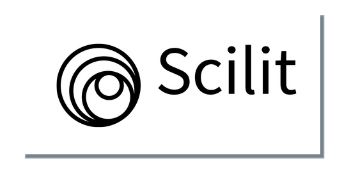Potential of Physalis Angulata (Ciplukan) as Management of Skin Disorders
DOI:
https://doi.org/10.11594/jk-risk.01.2.4Keywords:
Physalis angulata, Ciplukan, SkinAbstract
Physalis angulata is a plant from the Solanacea family that has been used as a traditional treatment for various diseases in various countries including Indonesia. Various phytochemicals have been isolated from Physalis angulata which contain carbohydrates, fats, minerals and vitamins and secondary metabolites, namely physalin, withangulatin, saponins, tannins, flavonoids and others. This plant has various pharmacological activities such as anti-inflammatory, immunomodulating, antiproliferation, antioxidant, antibacterial, and others that support extracts of leaves, fruit, stems, and roots with different phytochemicals. Since time immemorial Physalis angulata is also a traditional medicine for a variety of skin disorders, such as wounds, ulcer and inflammation. Currently, research on P. angulata for skin disorders has been developed such as adjuvant therapy for scleroderma, accelerated wound healing and irritant contact dermatitis. Given the vast pharmacological activity of Physalis angulata, this plant is highly considered a therapeutic modality for a variety of skin diseases. For this reason, research on safety and types of extracts is still needed to determine the active ingredients that are useful for each disease.
Downloads
References
Sharma, Navdeep & Bano, Anisha & Dhaliwal, et al. A Pharmacological Comprehensive Review on 'Rassbhary' Physalis Angulata (L.). International Journal of Pharmacy and Pharmaceutical Sciences. 2015:7:34-40.
Ukwubile CA, Oise IE. Analgesic and Antiinflammatory Activity of Physalis angulata linn.(solanaceae) Leaf Methanolic Extract in Swiss Albino Mice. International biological and biomedical journal, 2016:2(4):167-170.
Ramesh BN, Mahalakshmi AM. Physalis angulata l.: An Ethanopharmacological Review. Indo American Journal of Pharm Research. 2014:4(3):1479-1486
Ayodhyareddy P, Rupa P. Ethnomedicinal, Phytochemical and therapeutic Importance of Physalis angulata L.: A Review. Int. J. Sci. Res. 2015.5:2122-2127
Latifah N, Hidayati AA, Yunas SR, et al. Ciplukan (physalis angulata l.). Cancer chemoprevention research center. 2014. Http://ccrc.farmasi.ugm.ac.id/ page_id=193.
Salgado ER, Arana VG. Physalis angulata L.(Bolsa Mullaca): a review of its traditional uses, chemistry and pharmacology. Boletín Latinoamericano y del Caribe de Plantas Medicinales y Aromáticas, 2013:12(5):431-445.
Pratiwi, NS. Gambaran kadar vitamin c pada buah ciplukan (physalis angulata l)(studi di desa candi mulyo kabupaten jombang. Stikes insan cendekia medika jombang, 2018.
Munhoz VM, Longhini R, Souze Jose RP, et al. Extraction of flavonoids from tagetes patula: process optimization and screening for biological activity. Rev bras farmacogn, 2014;24:576-583. DOI: https://doi.org/10.1016/j.bjp.2014.10.001
Wang Q, Jin J, Dai N, et al. Anti-inflammatory effects, nuclear magnetic resonance identification, and high-performance liquid chromatography isolation of the total flavonoids from Artemisia frigida. J Food Drug Anal. 2016;24(2):385-391. doi:10.1016/j.jfda.2015.11.004
Marzouk MM. Flavonoid constituents and cytotoxic activity of erucaria hispanica (l.) Druce growing wild in egypt. Arabian journal of chemistry, 2016;9:411–415
Wang TY, Li Q, Bi KS. Bioactive flavonoids in medicinal plants: Structure, activity and biological fate. Asian J Pharm Sci. 2018;13(1):12-23. doi:10.1016/j.ajps.2017.08.004
Zhang WN, Tong WY. Chemical Constituents and Biological Activities of Plants from the Genus Physalis. Chem Biodivers. 2016;13(1):48-65.
doi:10.1002/cbdv.201400435
Ahmadu AA, Omonigho U. Flavonoids from the leaves of Physalis angulata Linn. Planta Medica, 2013.79(13), PJ5
Cheok C.Y, Salman H.A, Sulaiman R. Extraction and Quantification of Saponins: a review. Food Res Int, 2014.59:16-40
Cornell university-college of agriculture and life sciences. Department of animal science: plants poisonous to livestock. http:// www.poisonousplants.ansci.cornell.edu/toxicagents/Saponin.html
Fan J-J, Liu X, Zheng X-L, Zhao HY, Xia H, Sun Y. A Novel Cytotoxic Physalin from Physalis angulata. Natural Product Communications. October 2017. doi:10.1177/1934578X1701201016
Ushie OA, Iyen SI, Abeng FE, et al. Quantification of Alkaloids, Flavonoids and Saponins in Physalis angulata and Mucuna pruriens. FRsCS. 2019:1(2).
Kurek J. Introductory Chapter: Alkaloids-Their Importance in Nature and for Human Life. In Alkaloids-Their Importance in Nature and Human Life. IntechOpen, 2019.
Susanti RF, Kurnia K, Vania A, et al. J. Total phenol, flavanoid and antioxidant activity of Physalis angulata leaves extract by subcritical water extraction. Modern Appl. Sci, 2015. 9(7), 190-198.
Lailatul FN. Pengaruh ekstrak buah ciplukan (physalis angulata l.) Terhadap kadar sgpt dan sgot mencit putih jantan (mus musculus) hyperglikemia. University of muhammadiyah malang, 2016.
Pereda MDCV, Dieamant G, Nogueira C, et al. Sterol-standardized phytopharmaceutical from ground cherry: Corticoid-like properties on human keratinocytes and fibroblasts and its effects in a randomized double-blind placebo-controlled clinical trial [published online ahead of print, 2018 Dec 30]. J Cosmet Dermatol. 2018;10.1111/jocd.12851. doi:10.1111/jocd.12851
Rathore C, Dutt K, Sahu S, et al. Antiasthmatic activity of the methanolic extract of physalis angulata linn. J medplants res, 2011;5:5351 - 5355.
Lee YY, Park JS, Lee EJ, et al. Anti-inflammatory mechanism of ginseng saponin metabolite Rh3 in lipopolysaccharide-stimulated microglia: critical role of 5'-adenosine monophosphate-activated protein kinase signaling pathway. J Agric Food Chem. 2015;63(13):3472-3480. doi:10.1021/jf506110y
Działo M, Mierziak J, Korzun U, et al. The Potential of Plant Phenolics in Prevention and Therapy of Skin Disorders. Int J Mol Sci. 2016;17(2):160. Published 2016 Feb 18. doi:10.3390/ijms17020160
Górniak I, Bartoszewski R, Króliczewski J. Comprehensive review of antimicrobial activities of plant flavonoids. Phytochemistry Reviews, 2019.18(1), 241-272.
Donkor A.M, Glover R.K.L, Boateng J.K, Gakpo V.P. Antibacterial activity of the fruit extract of Physalis angulata and its formulation. J Med Biomed Sci, 2012. 1: 21 - 26.
Osho A, Adetunji T, Fayemi SO, Moronkola DO. Antimicrobial activity of essential oils of Physalis angulata. L. Afr J Tradit Complement Altern Med. 2010;7(4):303-306. doi:10.4314/ajtcam.v7i4.56696
Indrawati A, Latif M. Uji aktivitas anti mikobakterium tuberkulosis ekstrak etanol daun ciplukan (physalis angulata l.). Majalah farmasi nasional, 2016.13(2), 38-45.
Dewi S, Isbagio H, Purwaningsih EH, et al. A Double-blind, Randomized Controlled Trial of Ciplukan (Physalis angulata Linn) Extract on Skin Fibrosis, Inflammatory, Immunology, and Fibrosis Biomarkers in Scleroderma Patients. Acta Med Indones. 2019;51(4):303-310.
Norfitriah E, Yunianita D, Pramitha SR, Carabelly AN. Effectivity of Physalis Angulata L. Extract 70% for Wound Healing Acceleration on Galur Wistar Rats’skin. 2013
Pinto NB, Morais TC, Carvalho KM, et al. Topical anti-inflammatory potential of Physalin E from Physalis angulata on experimental dermatitis in mice. Phytomedicine. 2010;17(10):740-743. doi:10.1016/j.phymed.2010.01.006
Hsu CC, Wu YC, Farh L, et al. Physalin B from Physalis angulata triggers the NOXA-related apoptosis pathway of human melanoma A375 cells. Food Chem Toxicol. 2012;50(3-4):619-624. doi:10.1016/j.fct.2011.12.017
Karuppagounder V, Arumugam S, Thandavarayan RA, et al. Modulation of HMGB1 translocation and RAGE/NFκB cascade by quercetin treatment mitigates atopic dermatitis in NC/Nga transgenic mice. Exp Dermatol. 2015;24(6):418-423. doi:10.1111/exd.12685
Karuppagounder V, Arumugam S, Thandavarayan RA, et al. Molecular targets of quercetin with anti-inflammatory properties in atopic dermatitis. Drug Discov Today. 2016;21(4):632-639. doi:10.1016/j.drudis.2016.02.011
Sun L, Liu J, Cui D, et al. Anti-inflammatory function of Withangulatin A by targeted inhibiting COX-2 expression via MAPK and NF-kappaB pathways. J Cell Biochem. 2010;109(3):532-541. doi:10.1002/jcb.22430
Nan W, Ding L, Chen H, et al. Topical Use of Quercetin-Loaded Chitosan Nanoparticles Against Ultraviolet B Radiation. Front Pharmacol. 2018;9:826. Published 2018 Jul 26. doi:10.3389/fphar.2018.00826
Downloads
Published
Issue
Section
License
Authors who publish with this journal agree to the following terms:
- Authors retain copyright and grant the journal the right of first publication with the work simultaneously licensed under a Creative Commons Attribution License that allows others to share the work with an acknowledgement of the work's authorship and initial publication in this journal.
- Authors can enter into separate, additional contractual arrangements for the non-exclusive distribution of the journal's published version of the work (e.g., post it to an institutional repository or publish it in a book), with an acknowledgement of its initial publication in this journal.
- Authors are permitted and encouraged to post their work online (e.g., in institutional repositories or on their website) before and during the submission process, as it can lead to productive exchanges and earlier and greater citation of published work (See The Effect of Open Access).
















